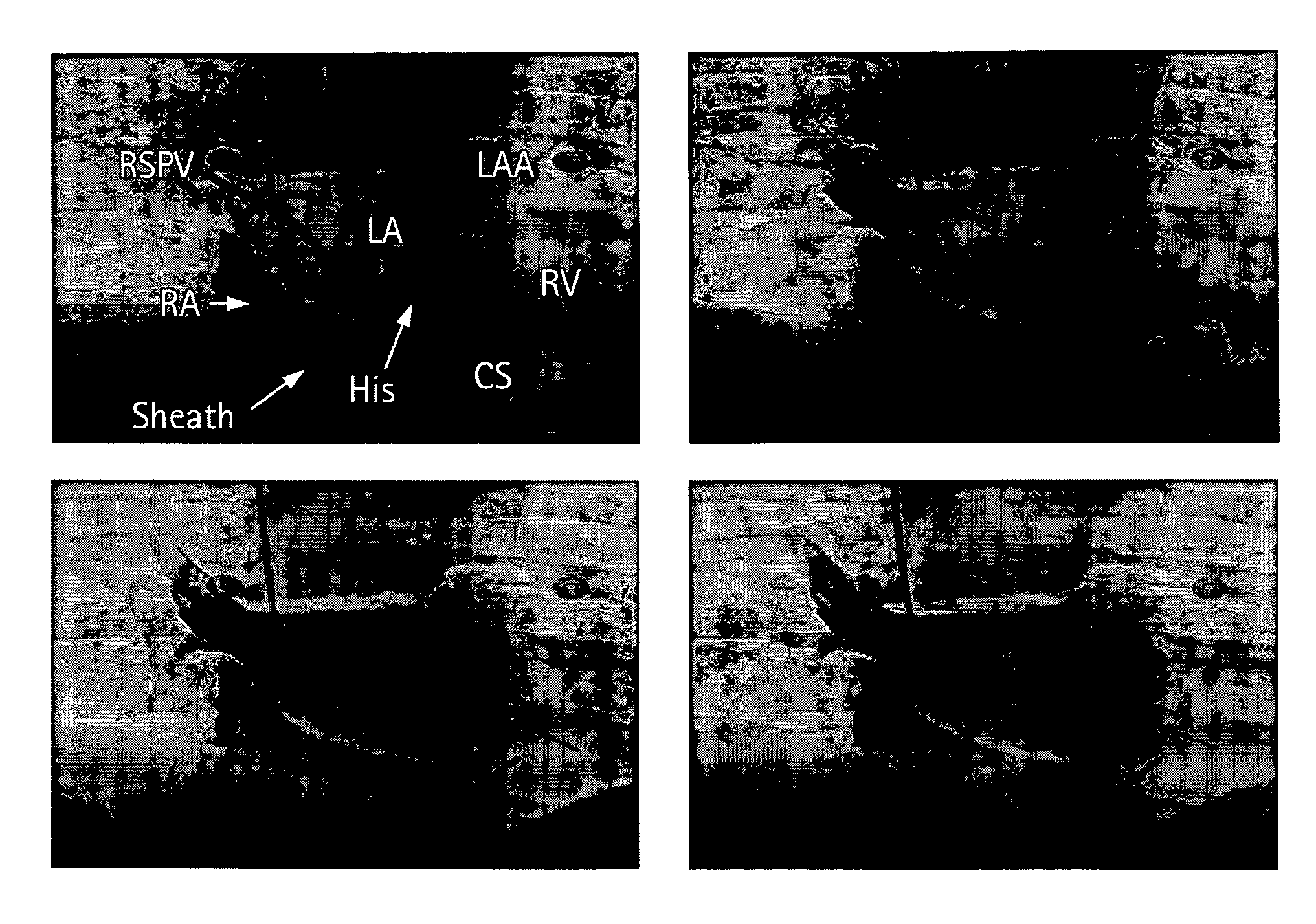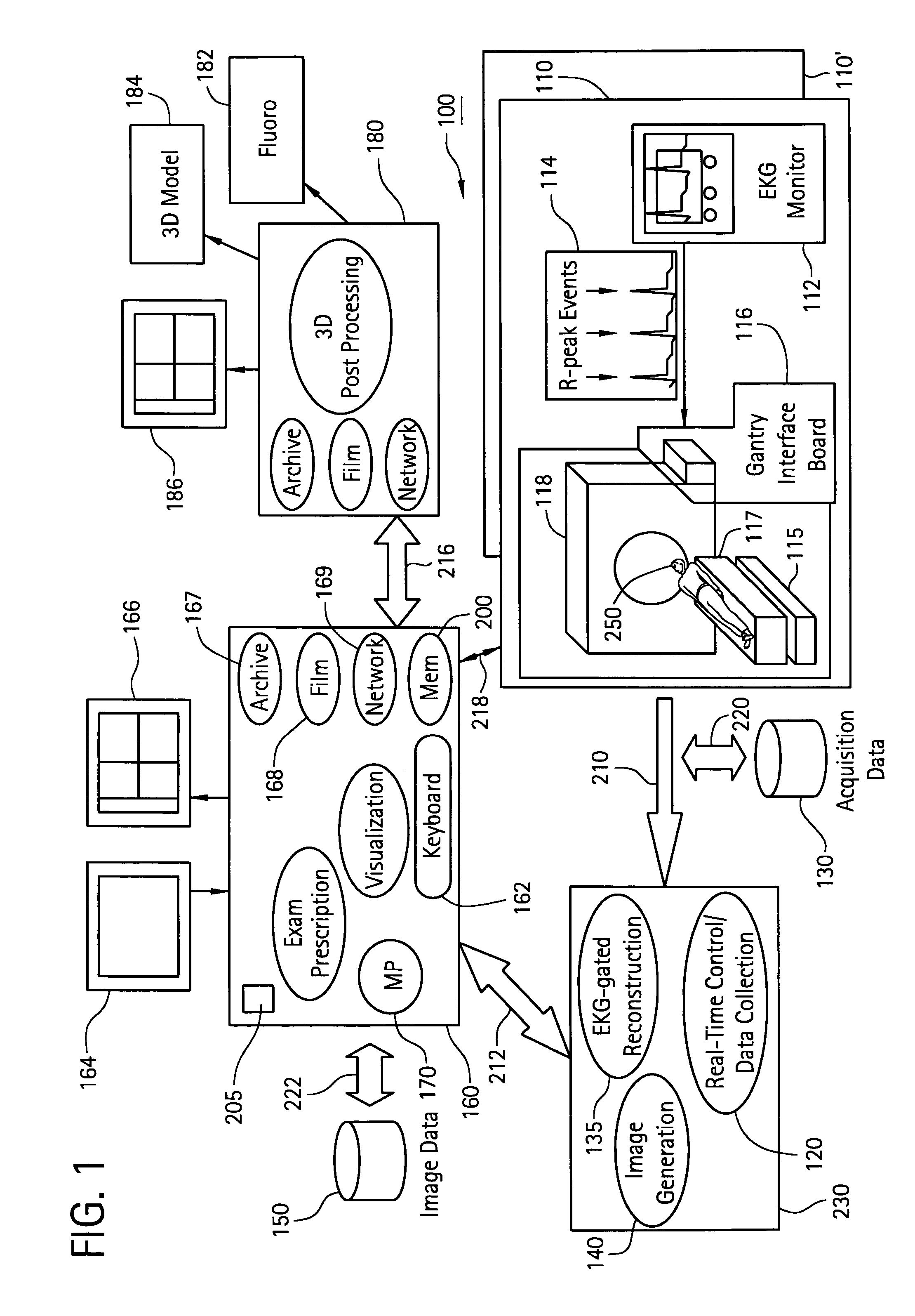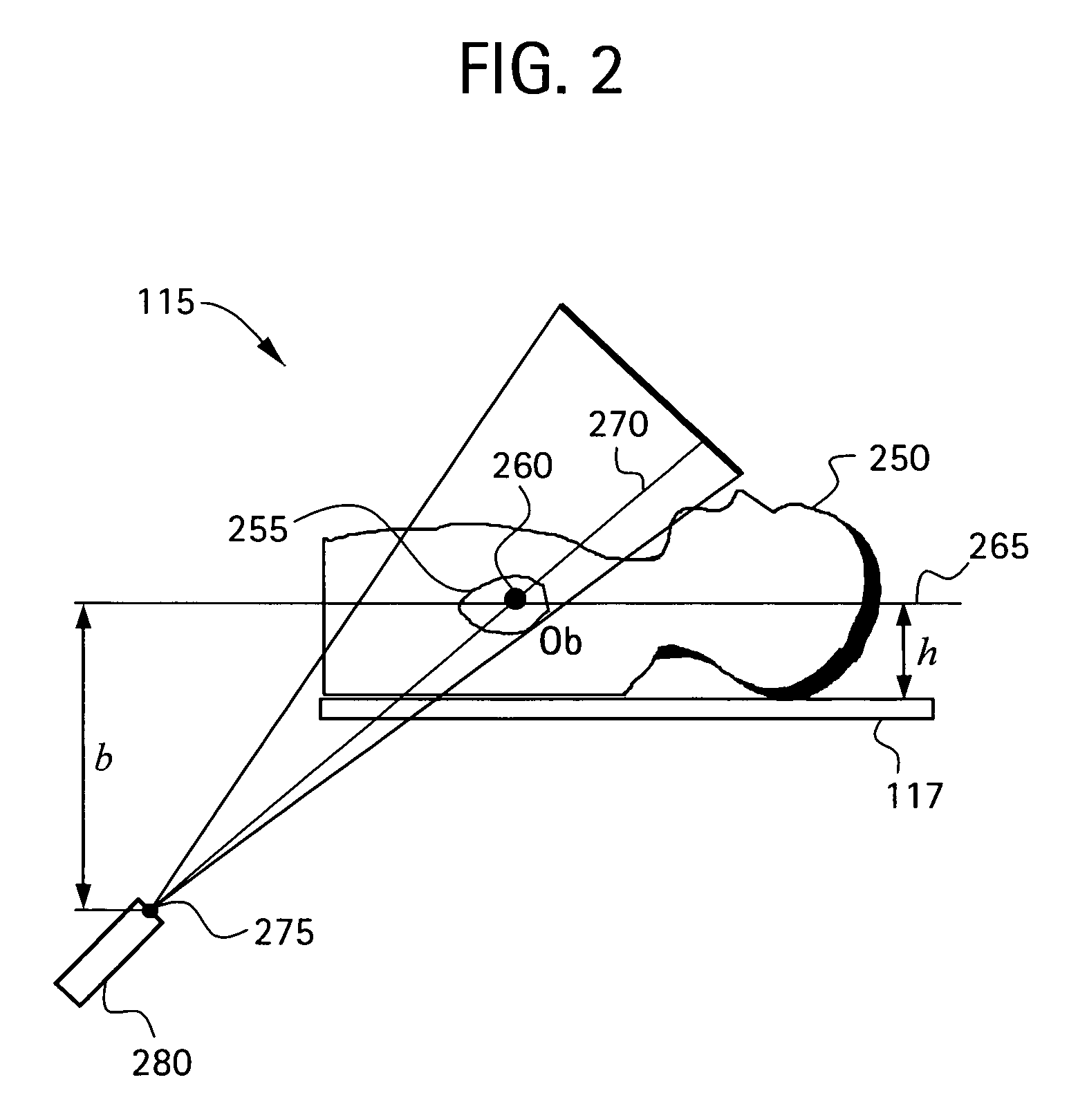Method and system for registering 3D models of anatomical regions with projection images of the same
a technology of anatomical regions and projection images, applied in the field of medical imaging systems, can solve the problems of high incidence of complications in patients with af, cumbersome and lengthy current approaches to mapping and ablation using current fluoroscopically guided techniques
- Summary
- Abstract
- Description
- Claims
- Application Information
AI Technical Summary
Problems solved by technology
Method used
Image
Examples
first embodiment
[0059]In a first embodiment, the apparent diameter of the catheter 260 in the fluoroscopy image 182 is determined and then compared with the known actual diameter of the catheter 260. From this information, the actual dimension of an anatomical structure in the anatomical region 255 in the fluoroscopy image 182 may be determined. The anatomical structure in the fluoroscopy image 182 is then matched with the same anatomical structure in the 3D model 184, where now the actual and apparent sizes of the same anatomical structure in the 3D model 184 may be compared. From this comparison, a scaling factor may be established between the first and second image acquisition systems 115, 118.
second embodiment
[0060]In a second embodiment, the catheter 260 is disposed at a known anatomical structure in the anatomical region 255 at a location defined by the intersection of a horizontal plane 265 and the line 270 joining the focal point 275 of the fluoroscopy system 115 to the projection of the catheter 260 in the fluoroscopy image 182. Here, the horizontal plane 265 is defined by an elevation h above the anatomical reference system 117 to the known anatomical structure in the fluoroscopy system 115, which establishes a known location of the catheter 260 in the fluoroscopy system 115 and the CT system 118 relative to the anatomical reference system 117. Knowing the location of the catheter 260 in the 3D model 184 and the actual and apparent dimensions for elevation h in the 3D model 184, the actual size of the same anatomical structure in the 3D model 184 as that in the fluoroscopy image 182 may be determined. By comparing the actual and apparent sizes of the anatomical structure in the 3D ...
third embodiment
[0061]In a third embodiment, the fluoroscopy system 115 is used to produce a first and a second set of fluoroscopy projection images, which are generated using at least two different x-ray projections separated by an angle sufficient to produce discernibly different projection images of the anatomical region 255. Here, as in other embodiments, the catheter 260 is disposed at a known anatomical structure in the anatomical region 255. By analyzing the two sets of projection images using a known triangulation approach, the location of the catheter 260 in the 3D model 184 with respect to the focal point 275 of the x-ray source 280 of the fluoroscopy system 115 may be determined, thereby defining a dimension b, which establishes a known location of the catheter 260 in the fluoroscopy system 115 and the CT system 118 relative to the focal point 275. Knowing the location of the catheter 260 in the 3D model 184 and the actual and apparent dimensions for dimension b in the 3D model 184, the ...
PUM
 Login to View More
Login to View More Abstract
Description
Claims
Application Information
 Login to View More
Login to View More - R&D
- Intellectual Property
- Life Sciences
- Materials
- Tech Scout
- Unparalleled Data Quality
- Higher Quality Content
- 60% Fewer Hallucinations
Browse by: Latest US Patents, China's latest patents, Technical Efficacy Thesaurus, Application Domain, Technology Topic, Popular Technical Reports.
© 2025 PatSnap. All rights reserved.Legal|Privacy policy|Modern Slavery Act Transparency Statement|Sitemap|About US| Contact US: help@patsnap.com



